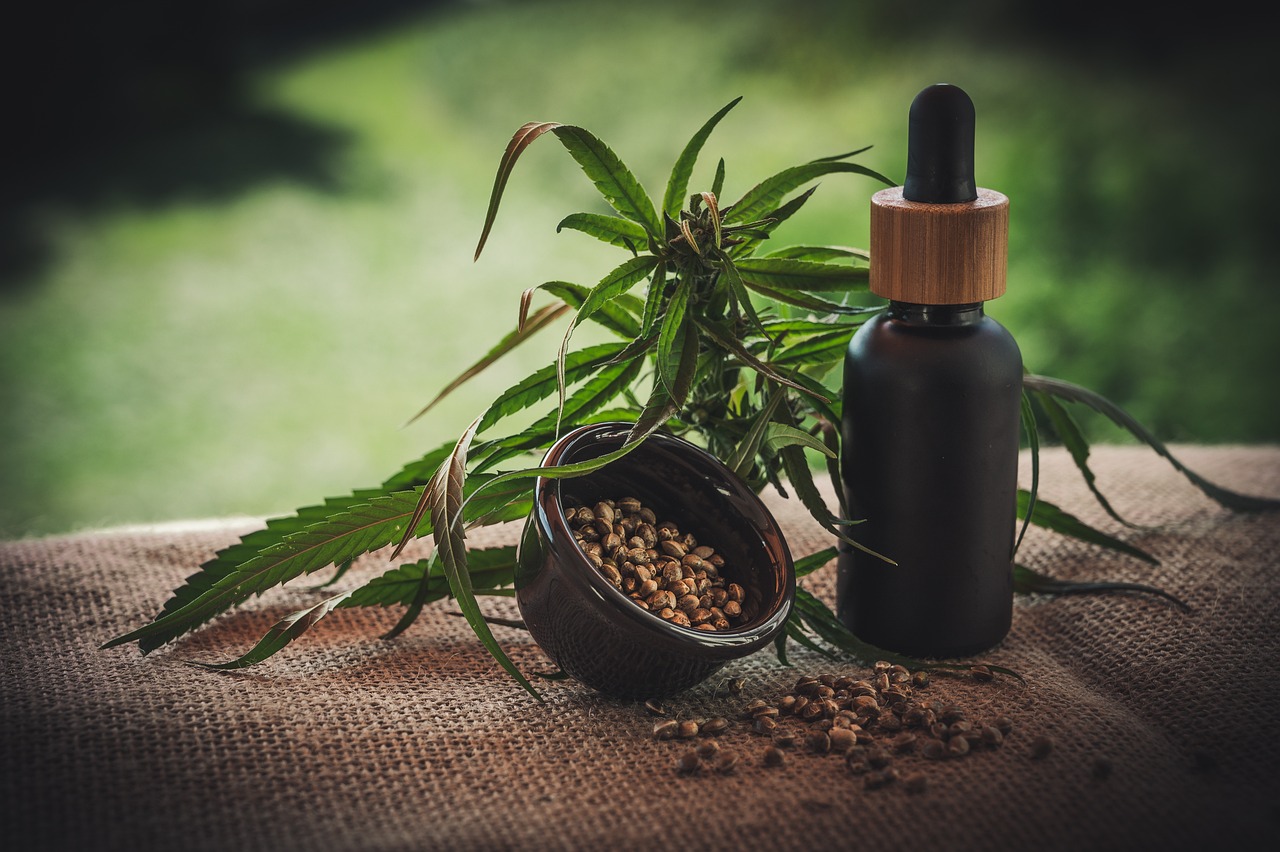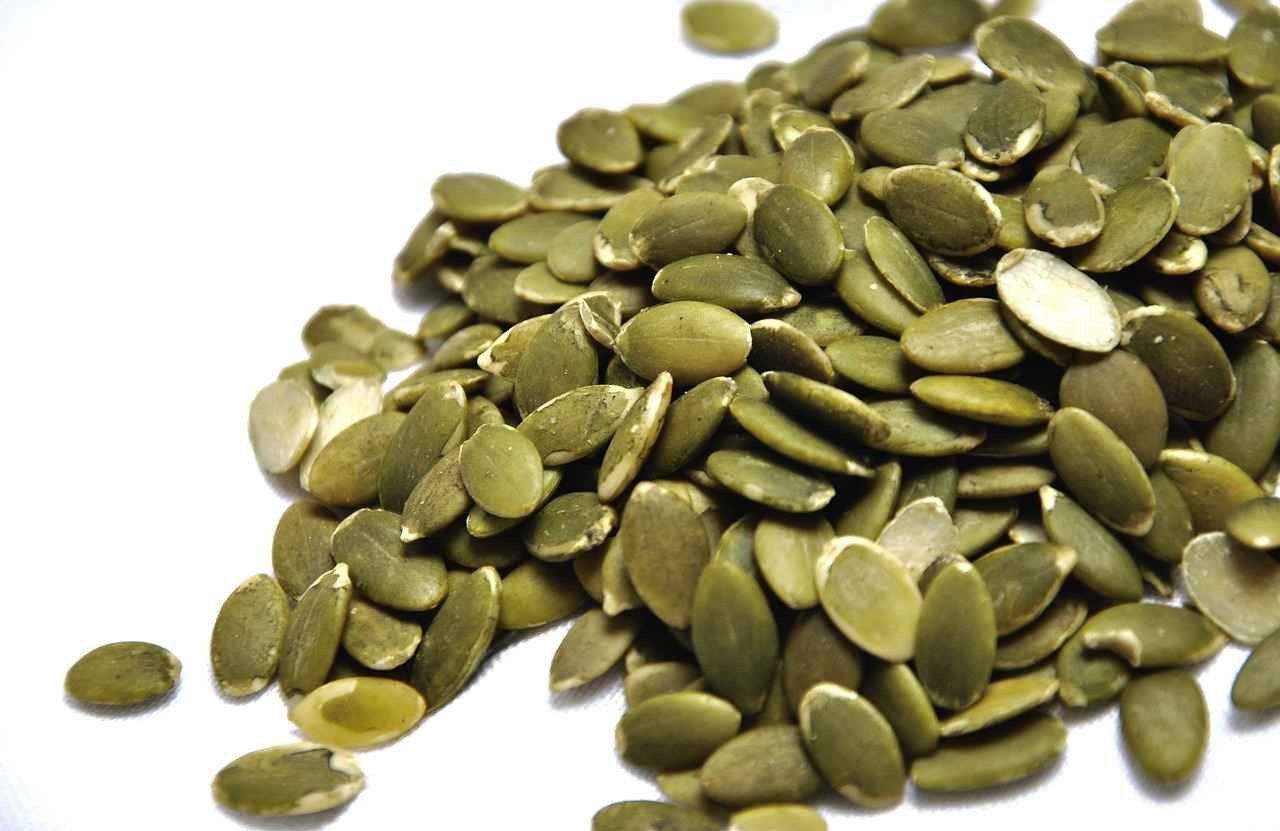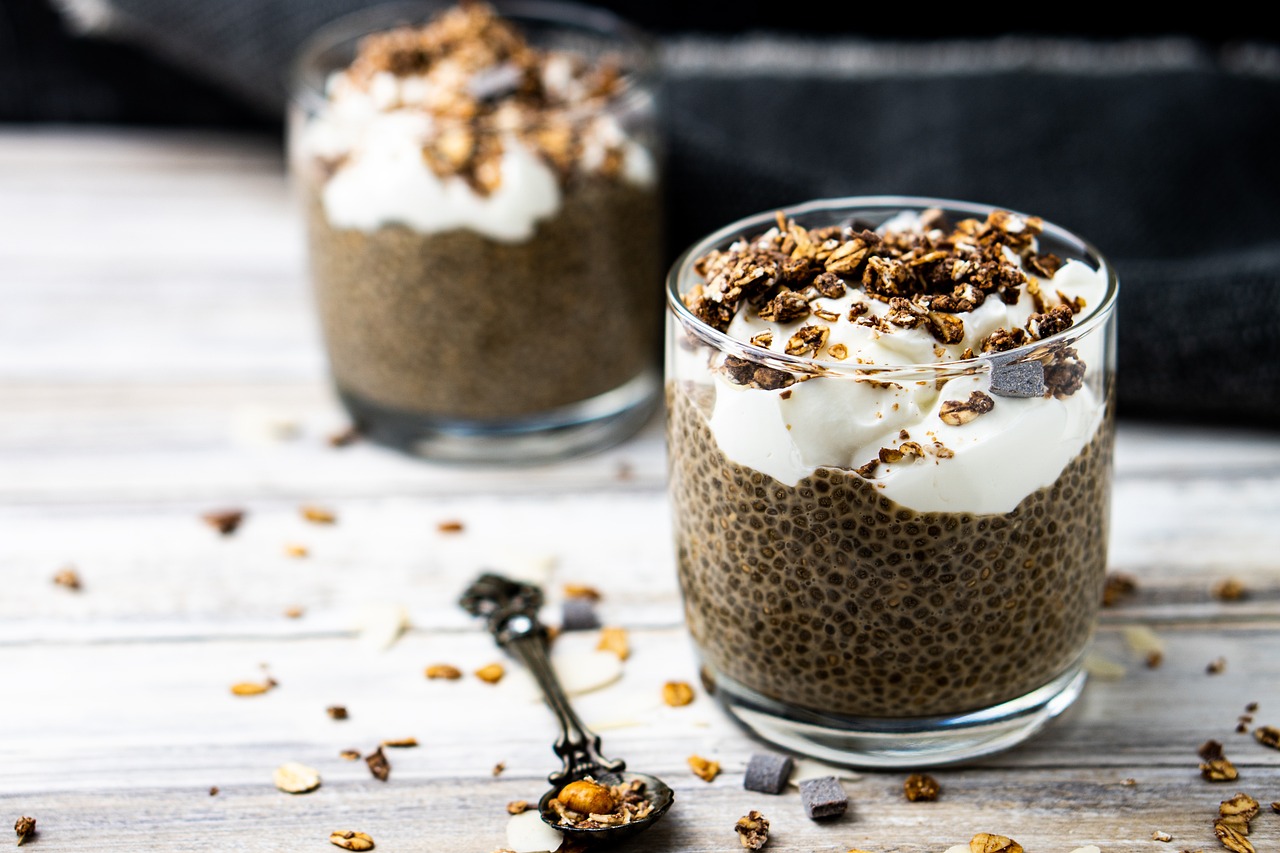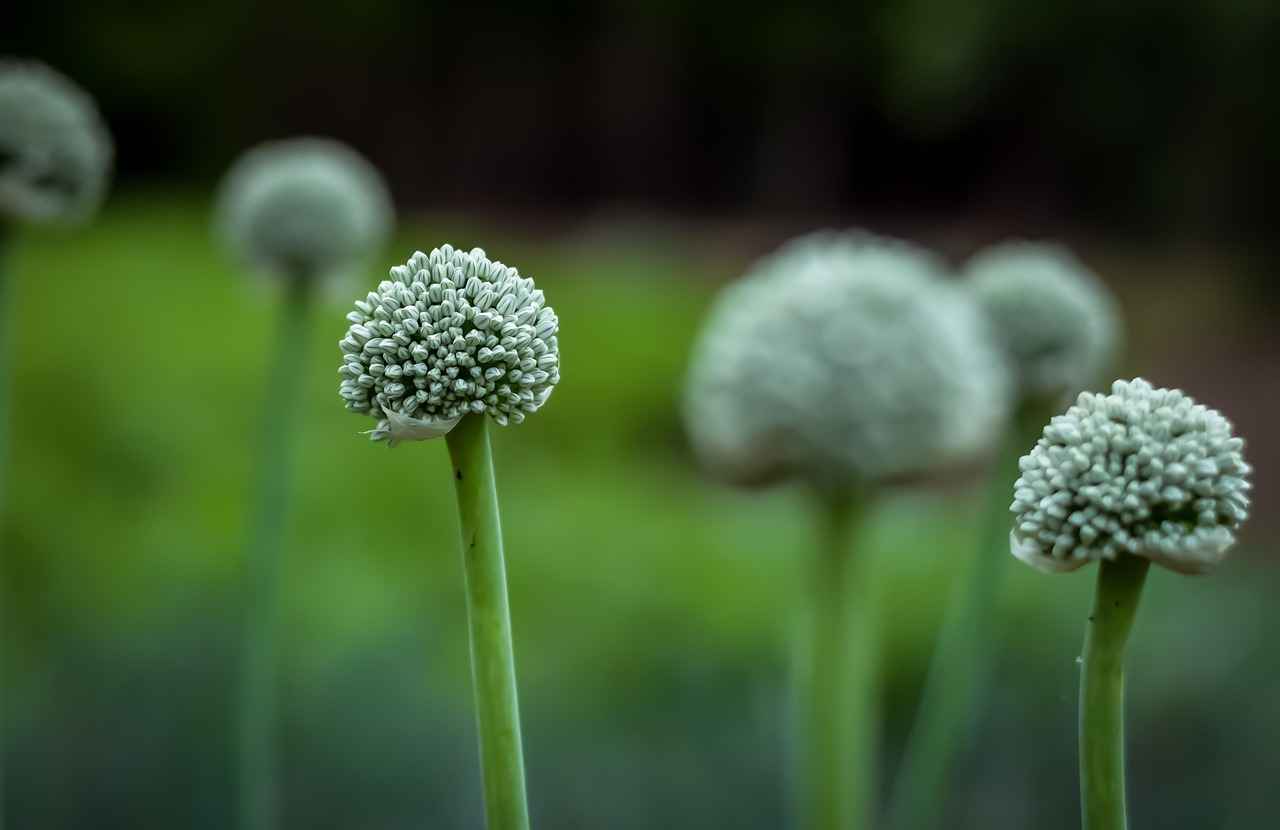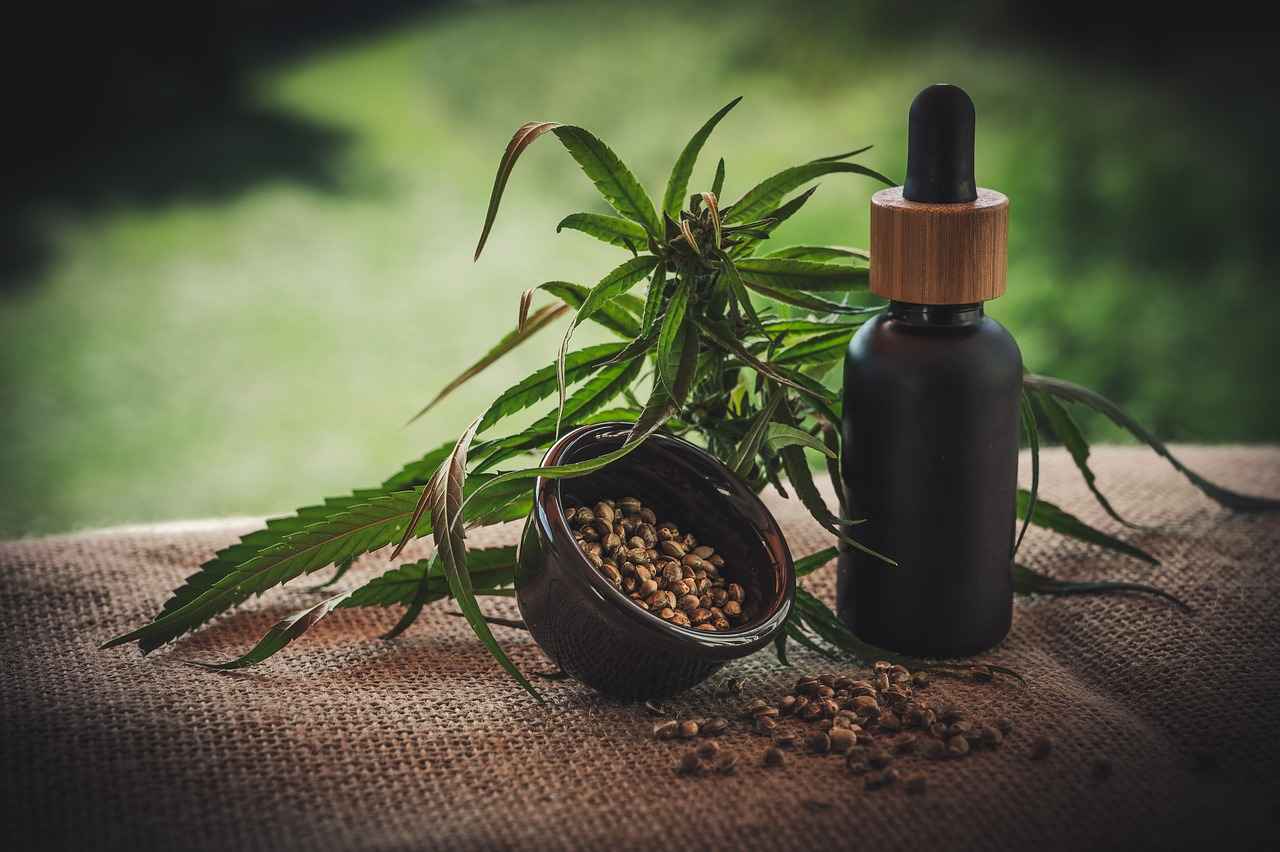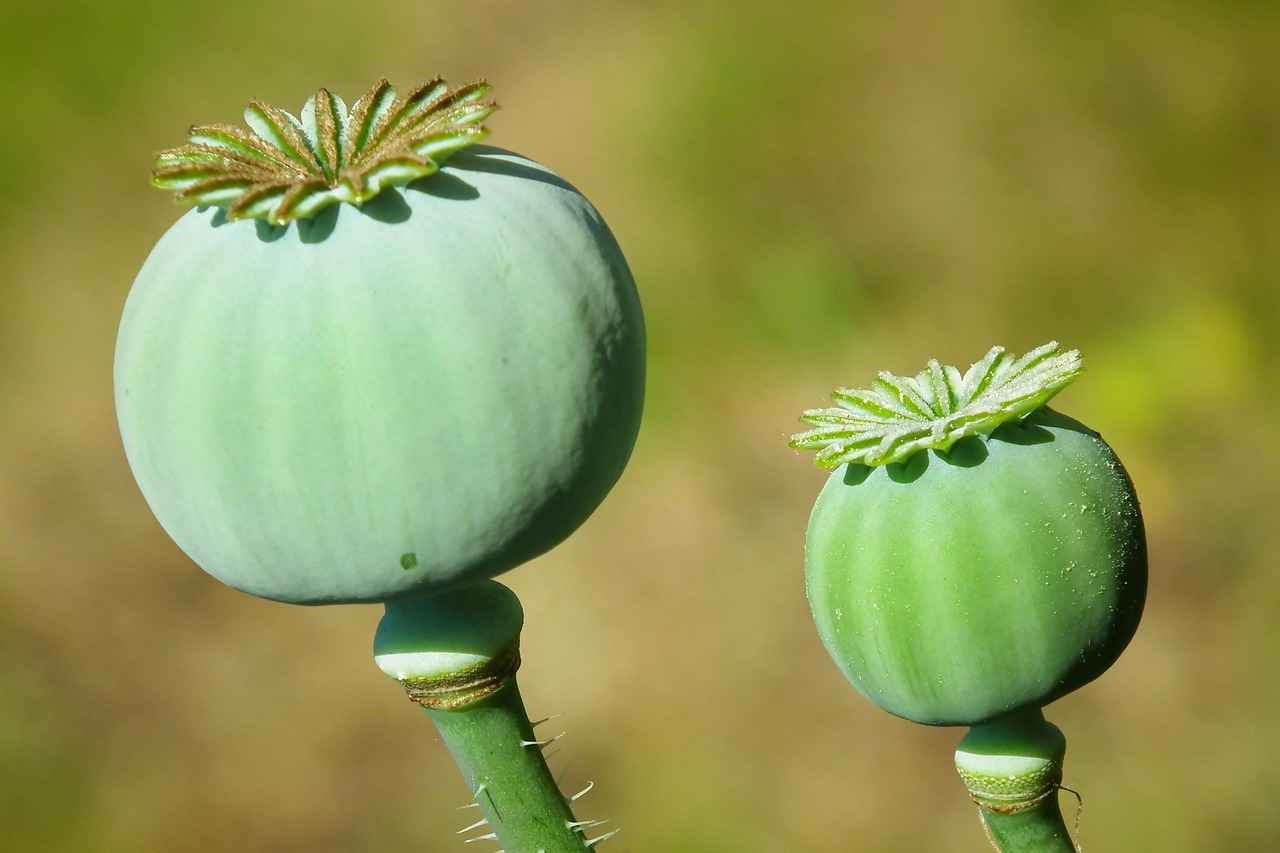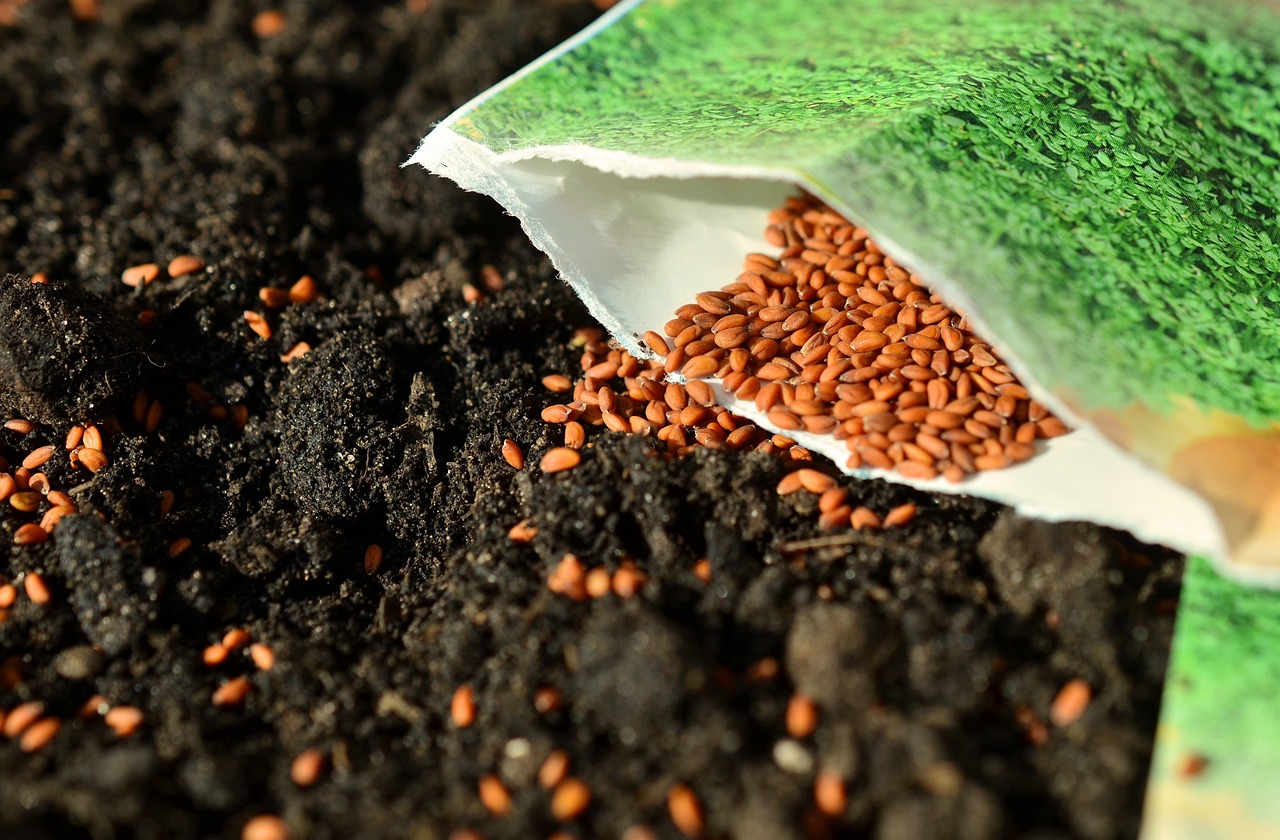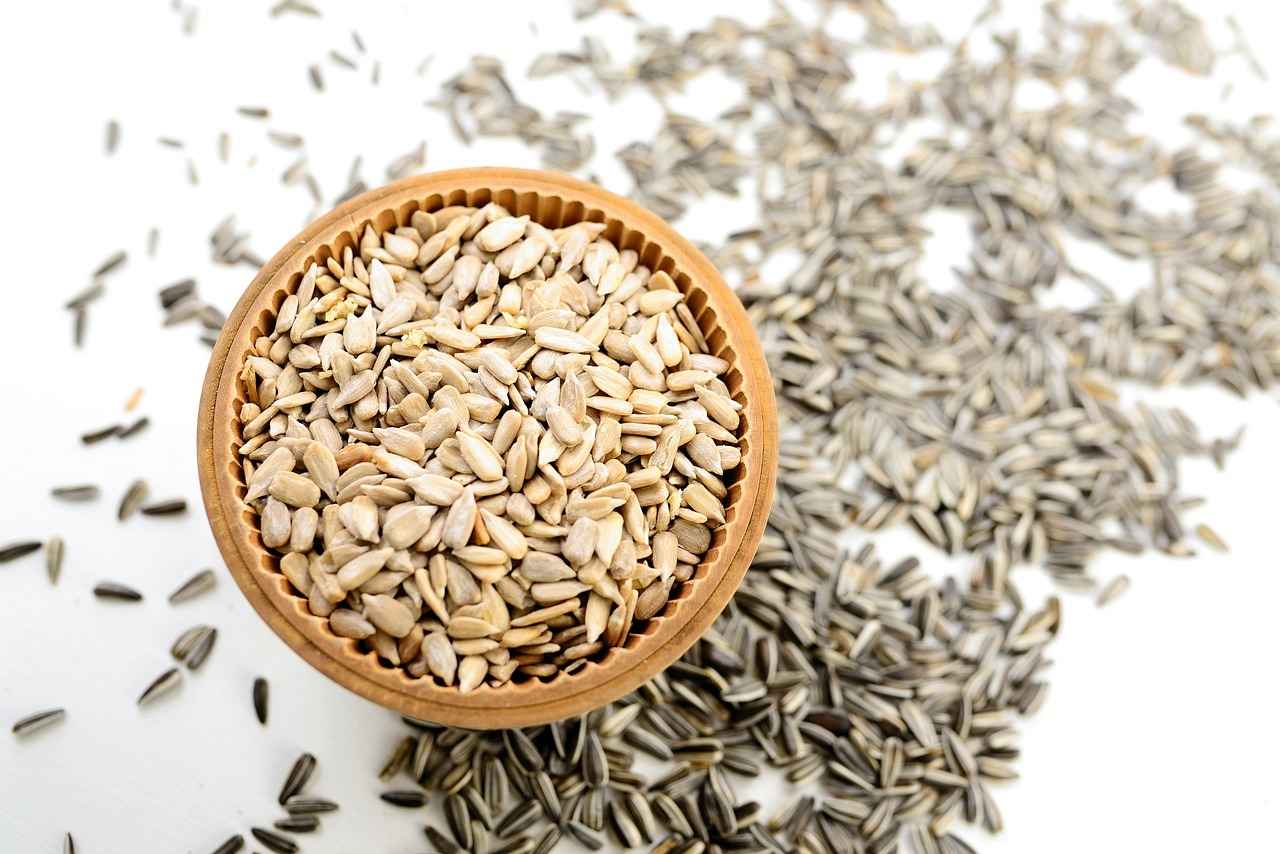This article delves into the most effective methods for soaking chia seeds, aiming to enhance their nutritional benefits, improve digestibility, and seamlessly incorporate them into your daily diet.
Why Soak Chia Seeds?
Soaking chia seeds is a crucial step for maximizing their nutritional value. When soaked, these tiny seeds absorb liquid and swell, forming a gel-like texture that not only makes them easier to digest but also enhances the absorption of their nutrients. This process is particularly important for individuals looking to reap the full health benefits that chia seeds offer.
What Are the Health Benefits of Chia Seeds?
Chia seeds are a powerhouse of nutrition, packed with omega-3 fatty acids, fiber, protein, and essential minerals. Understanding these health benefits can motivate you to include these seeds regularly in your meals.
- Rich in Omega-3 Fatty Acids: Chia seeds are an excellent source of alpha-linolenic acid (ALA), a plant-based omega-3 fatty acid that supports heart health and helps reduce inflammation.
- High in Dietary Fiber: These seeds are abundant in dietary fiber, which aids digestion, promotes feelings of fullness, and helps regulate blood sugar levels, making them beneficial for weight management.
How to Properly Soak Chia Seeds?
Soaking chia seeds is a straightforward process that involves mixing them with water or another liquid. Here’s how to do it correctly:
- What Is the Ideal Soaking Ratio? The ideal soaking ratio for chia seeds is typically 1:6, meaning one part chia seeds to six parts liquid. This ratio ensures the seeds expand properly and absorb enough moisture.
- How Long Should You Soak Chia Seeds? Chia seeds should be soaked for at least 30 minutes to several hours. The longer they soak, the thicker the gel becomes, which can be ideal for various recipes.
How to Incorporate Soaked Chia Seeds into Your Diet?
Once soaked, chia seeds can easily be added to a variety of dishes. Here are some creative ideas:
- Adding Chia Seeds to Smoothies: Soaked chia seeds blend effortlessly into smoothies, adding a nutritional boost without altering the flavor. They enhance the texture and provide a satisfying thickness.
- Using Chia Seeds in Baking: Incorporate chia seeds into baked goods like muffins and bread. They can serve as a nutritious egg substitute or simply as an added source of fiber and healthy fats.
Are There Any Risks or Side Effects?
While chia seeds are generally safe for most individuals, some may experience digestive discomfort. It’s essential to be aware of potential side effects:
- Can Chia Seeds Cause Digestive Issues? Some people may experience bloating or gas if they consume large amounts of chia seeds without adequate hydration. Gradually increasing your intake can help mitigate these issues.
- Are There Any Allergies to Chia Seeds? Although rare, some individuals may have allergies to chia seeds. It’s crucial to monitor for any allergic reactions when introducing them into your diet for the first time.
In summary, soaking chia seeds is an effective way to enhance their nutritional benefits and improve digestibility. By incorporating them into your meals, you can enjoy their numerous health advantages while diversifying your diet.
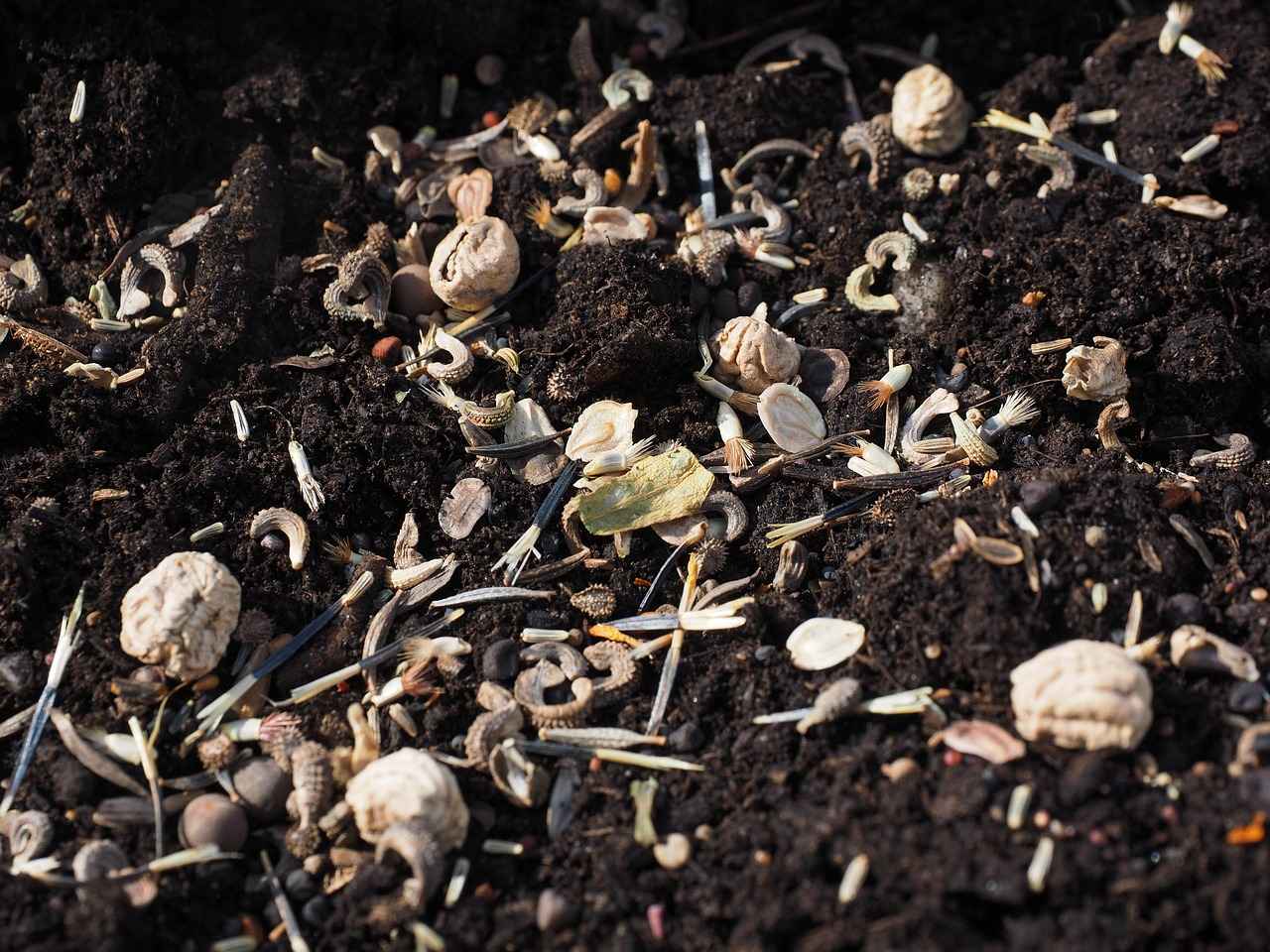
Why Soak Chia Seeds?
Soaking chia seeds is a crucial step in unlocking their full nutritional potential. This simple yet effective process not only enhances the absorption of nutrients but also transforms the seeds into a gel-like consistency, making them easier to digest and incorporate into various meals. In this section, we will delve deeper into the reasons why soaking chia seeds is beneficial and how it can elevate your overall health.
Chia seeds are a powerhouse of nutrients, including omega-3 fatty acids, fiber, and essential minerals. However, without proper soaking, the body’s ability to absorb these nutrients can be limited. When chia seeds are soaked, they expand and form a gel due to their high soluble fiber content. This gel-like texture not only aids in digestion but also helps in the gradual release of nutrients into the bloodstream, maximizing their health benefits.
Many people experience digestive discomfort when consuming dry chia seeds, as they can absorb water from the digestive tract. Soaking chia seeds mitigates this issue by allowing them to absorb liquid beforehand. This pre-hydration process makes them easier to digest, reducing the risk of bloating or gas. For those with sensitive digestive systems, soaking chia seeds can be a game-changer.
Once soaked, chia seeds can be seamlessly integrated into a variety of dishes. Their gel-like consistency makes them an excellent addition to smoothies, puddings, and even baked goods. By incorporating soaked chia seeds into your meals, you not only enhance the texture but also boost the nutritional profile of your dishes. They can serve as a thickening agent in soups or as an egg substitute in vegan baking, providing versatility in the kitchen.
To reap the maximum benefits from chia seeds, it’s essential to soak them correctly. The ideal soaking ratio is 1:6, meaning one part chia seeds to six parts liquid. This ensures that the seeds expand adequately and absorb sufficient moisture. Soaking for at least 30 minutes is recommended, but for a thicker gel, soaking them for several hours or overnight is ideal.
- Water: The most straightforward option, allowing the natural flavor of chia seeds to shine.
- Nut Milks: Almond, coconut, or oat milk can add a creamy texture and enhance flavor.
- Juice: Soaking chia seeds in juice can create a delicious and nutritious treat.
Once soaked, the possibilities are endless. Add them to your morning smoothie for an added nutrient boost, mix them into yogurt or oatmeal, or use them in baking recipes to enhance fiber content. The adaptability of soaked chia seeds makes them an easy addition to any meal plan.
While chia seeds are generally safe for most individuals, it’s important to consume them in moderation. Some people may experience digestive issues if they are not adequately hydrated. It’s advisable to start with small amounts and gradually increase your intake to allow your digestive system to adjust.
In conclusion, soaking chia seeds is a simple yet effective way to enhance their nutritional value, improve digestibility, and incorporate them into your daily diet. By understanding the benefits and methods of soaking, you can make the most out of this nutritious superfood.
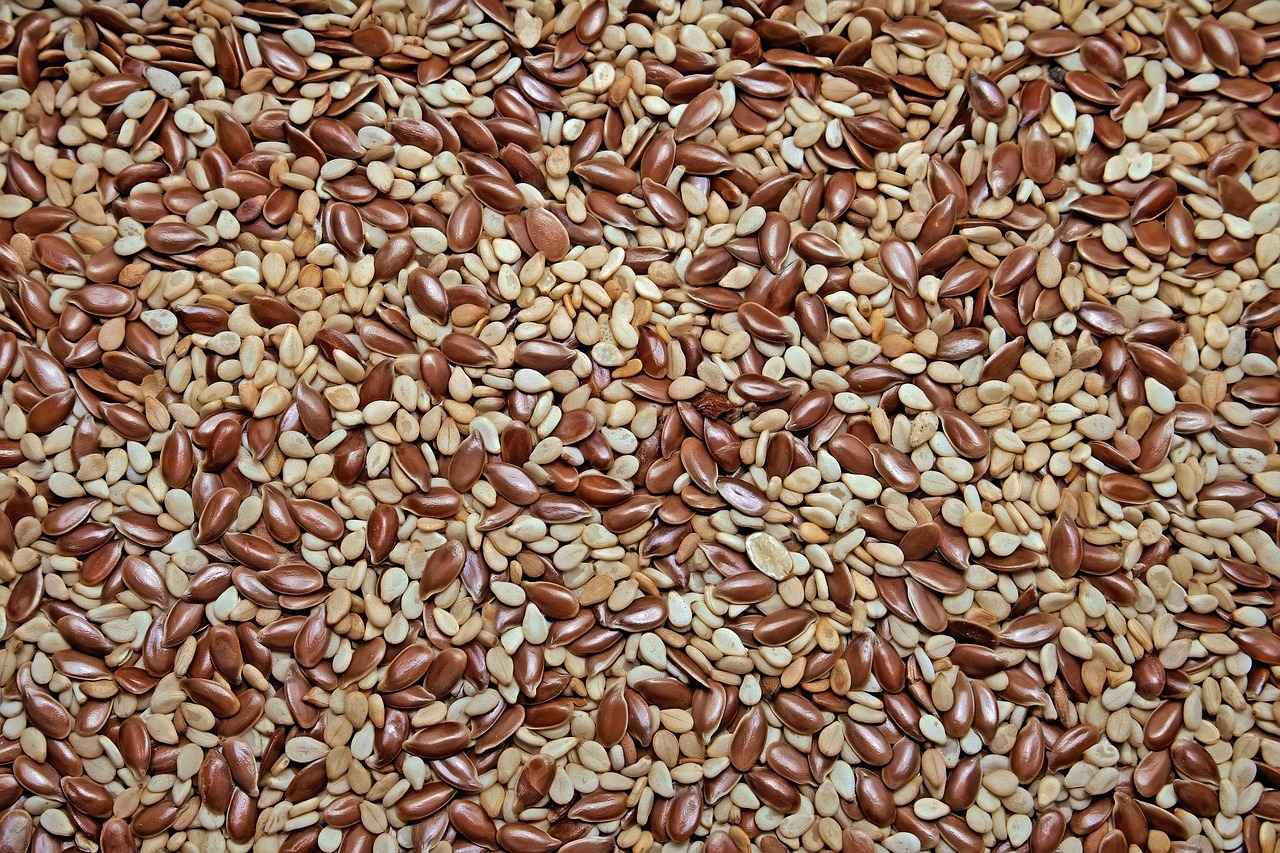
What Are the Health Benefits of Chia Seeds?
Chia seeds have gained significant popularity in recent years, and for good reason. These tiny seeds are not only versatile but also packed with nutrients that can greatly benefit your health. Understanding the various health benefits of chia seeds can motivate you to incorporate them into your daily diet.
Chia seeds are a powerhouse of essential nutrients. They are rich in omega-3 fatty acids, dietary fiber, protein, and a variety of essential minerals. Each of these components contributes uniquely to your overall health, making chia seeds a valuable addition to your meals.
One of the standout features of chia seeds is their high concentration of alpha-linolenic acid (ALA), a plant-based omega-3 fatty acid. Omega-3s are known for their ability to support heart health and reduce inflammation throughout the body.
Incorporating omega-3 fatty acids into your diet can lead to numerous health benefits, including:
- Lowering blood pressure
- Reducing triglycerides
- Improving overall cardiovascular health
These benefits make chia seeds an excellent choice for anyone looking to enhance their heart health.
Chia seeds are also an exceptional source of dietary fiber, which plays a crucial role in digestive health. The fiber content in chia seeds helps to:
- Aid digestion
- Promote a feeling of fullness
- Regulate blood sugar levels
This makes them particularly beneficial for those looking to manage their weight or improve their digestive health.
In addition to fiber and omega-3s, chia seeds are rich in essential minerals, including:
- Calcium
- Magnesium
- Phosphorus
- Zinc
These minerals are vital for maintaining strong bones, supporting metabolic processes, and promoting overall well-being.
Once you understand the health benefits of chia seeds, you may wonder how to include them in your diet. Here are some practical ideas:
- Add them to smoothies for a nutritional boost.
- Mix them into yogurt or oatmeal for added texture and fiber.
- Use them as an egg substitute in baking by mixing chia seeds with water.
While chia seeds are generally safe for most people, it’s important to consume them with adequate hydration. This can help prevent potential digestive issues such as bloating or gas. If you’re new to chia seeds, consider starting with small amounts and gradually increasing your intake.
Though rare, some individuals may experience allergic reactions to chia seeds. It’s advisable to monitor your body’s response when introducing them into your diet for the first time.
In conclusion, the health benefits of chia seeds are numerous and varied. From their rich nutrient profile to their versatility in meals, incorporating them into your diet can lead to improved health and well-being.
Rich in Omega-3 Fatty Acids
Chia seeds are often hailed as a superfood, and one of their most significant health benefits lies in their rich content of omega-3 fatty acids. Specifically, chia seeds are an excellent source of alpha-linolenic acid (ALA), which is a plant-based omega-3 fatty acid. This essential nutrient plays a crucial role in promoting heart health and reducing inflammation throughout the body.
Omega-3 fatty acids are vital for numerous bodily functions. They are known to support cardiovascular health by:
- Lowering blood pressure: Regular consumption of omega-3s can help maintain healthy blood pressure levels.
- Reducing triglycerides: Omega-3s are effective in lowering triglyceride levels, which can decrease the risk of heart disease.
- Improving arterial function: Omega-3s contribute to better arterial function, promoting overall heart health.
Chronic inflammation is linked to various health issues, including heart disease, diabetes, and arthritis. The ALA found in chia seeds helps to:
- Suppress inflammatory markers: Omega-3s can inhibit the production of substances that promote inflammation.
- Enhance anti-inflammatory responses: They promote the production of anti-inflammatory compounds in the body.
Research suggests that omega-3 fatty acids may also play a role in mental health. Regular intake of ALA can:
- Support brain function: Omega-3s are essential for maintaining optimal brain health.
- Reduce symptoms of depression: Some studies indicate that omega-3s can help alleviate symptoms of depression and anxiety.
While chia seeds are a fantastic source of ALA, there are other plant-based foods that can also provide omega-3 fatty acids. Consider incorporating the following into your diet:
- Flaxseeds: Another rich source of ALA, flaxseeds can be added to smoothies or baked goods.
- Walnuts: These nuts are not only delicious but also packed with omega-3s.
- Hemp seeds: With a favorable omega-3 to omega-6 ratio, hemp seeds are a nutritious addition to salads and cereals.
To fully benefit from the omega-3 content in chia seeds, consider the following tips:
- Soak them: Soaking chia seeds enhances their digestibility and nutrient absorption.
- Add to meals: Incorporate soaked chia seeds into smoothies, yogurt, or baked goods for a nutritional boost.
- Combine with healthy fats: Pairing chia seeds with other sources of healthy fats can enhance the absorption of omega-3s.
In conclusion, incorporating chia seeds into your diet can significantly contribute to your omega-3 fatty acid intake. With their numerous health benefits, including heart health support and inflammation reduction, chia seeds are a valuable addition to any health-conscious diet.
How Do Omega-3s Benefit Your Health?
Understanding the health benefits of omega-3 fatty acids is crucial for anyone looking to enhance their overall well-being. These essential fats play a significant role in numerous bodily functions, particularly in promoting heart health and reducing inflammation. In this section, we will delve deeper into how omega-3s can benefit your health, emphasizing their importance in a balanced diet.
Omega-3 fatty acids are a group of polyunsaturated fats that are vital for human health. They are categorized into three main types:
- Alpha-linolenic acid (ALA) – primarily found in plant sources like chia seeds, flaxseeds, and walnuts.
- Eicosapentaenoic acid (EPA) – mainly found in fish and other seafood.
- Docosahexaenoic acid (DHA) – also found in fish, particularly fatty fish like salmon and mackerel.
Research indicates that omega-3 fatty acids can help lower blood pressure, particularly in individuals with hypertension. They promote the production of nitric oxide, a compound that relaxes blood vessels, leading to improved blood flow. Regular consumption of omega-3-rich foods can thus contribute to maintaining healthy blood pressure levels.
Yes, omega-3 fatty acids have been shown to significantly reduce triglyceride levels in the bloodstream. High triglyceride levels are a risk factor for heart disease. Studies suggest that omega-3 supplementation can lower triglyceride levels by up to 30%, making it an effective strategy for improving cardiovascular health.
In addition to lowering blood pressure and reducing triglycerides, omega-3 fatty acids contribute to overall cardiovascular health in several ways:
- Anti-inflammatory Properties: Omega-3s help reduce inflammation in the body, which is linked to many chronic diseases, including heart disease.
- Improved Cholesterol Levels: They can increase levels of high-density lipoprotein (HDL), known as the “good” cholesterol, which helps remove bad cholesterol from the bloodstream.
- Heart Rhythm Regulation: Omega-3s can help stabilize heart rhythms, reducing the risk of arrhythmias and sudden cardiac death.
Emerging research suggests that omega-3 fatty acids may also play a role in mental health. They are believed to help reduce symptoms of depression and anxiety. The brain is composed of nearly 60% fat, and omega-3s are critical for maintaining its structure and function. Some studies have shown that individuals with higher omega-3 intake have a lower risk of developing mood disorders.
Beyond cardiovascular and mental health, omega-3 fatty acids may offer additional health benefits:
- Improved Joint Health: Omega-3s can help alleviate symptoms of rheumatoid arthritis and other inflammatory joint conditions.
- Enhanced Eye Health: DHA is a major structural component of the retina, and adequate omega-3 intake is linked to a reduced risk of macular degeneration.
- Skin Health: Omega-3s can help maintain skin hydration and reduce the severity of acne and other skin conditions.
Incorporating omega-3-rich foods such as chia seeds, flaxseeds, walnuts, and fatty fish into your diet can provide a multitude of health benefits. With their ability to lower blood pressure, reduce triglycerides, and improve overall cardiovascular health, omega-3 fatty acids are indeed a valuable addition to any diet.
Are There Other Sources of Omega-3s?
When it comes to omega-3 fatty acids, chia seeds are often highlighted as a stellar source. However, they are not the only option available. Understanding the variety of foods that provide omega-3s can help you maintain a well-rounded diet and meet your nutritional needs effectively.
Flaxseeds are another excellent source of omega-3 fatty acids, particularly alpha-linolenic acid (ALA). Just like chia seeds, flaxseeds can be consumed whole or ground. Ground flaxseeds are easier for the body to digest, allowing for better absorption of nutrients. They also contain a good amount of dietary fiber, which aids in digestion and promotes heart health.
Walnuts are not only delicious but also packed with omega-3s. A handful of walnuts can provide significant amounts of ALA, making them a great addition to your diet. They can be easily incorporated into salads, oatmeal, or enjoyed as a snack on their own. Additionally, walnuts contain antioxidants and other essential nutrients that contribute to overall health.
Fatty fish such as salmon, mackerel, and sardines are among the best sources of omega-3 fatty acids. Unlike plant-based sources, fatty fish provide EPA and DHA, two forms of omega-3s that are readily utilized by the body. Regular consumption of fatty fish is associated with numerous health benefits, including improved heart health and reduced inflammation.
- Hemp Seeds: These seeds are not only rich in omega-3s but also provide a balanced ratio of omega-3 to omega-6 fatty acids, making them a great addition to your diet.
- Algal Oil: A plant-based alternative to fish oil, algal oil is derived from algae and is a good source of DHA, making it suitable for vegans and vegetarians.
- Edamame: Young soybeans are a good source of omega-3s and can be enjoyed in salads, stir-fries, or as a snack.
To ensure you are getting enough omega-3 fatty acids, consider incorporating a variety of these foods into your meals. For instance, you can add chia seeds or flaxseeds to your smoothies, sprinkle walnuts on salads, or enjoy a serving of fatty fish a couple of times a week. By diversifying your sources of omega-3s, you can enjoy a range of flavors and textures while reaping the health benefits.
In summary, while chia seeds are a fantastic source of omega-3 fatty acids, there are numerous other foods that can help you meet your nutritional needs. By including a variety of these sources in your diet, you can enhance your overall health and well-being.
High in Dietary Fiber
Chia seeds are renowned for their impressive dietary fiber content, making them a popular choice among health enthusiasts. These tiny seeds pack a powerful punch when it comes to promoting digestive health and overall well-being. With approximately 10 grams of fiber per ounce, chia seeds can significantly contribute to your daily fiber intake.
Incorporating chia seeds into your diet can lead to several health benefits, primarily due to their high fiber content:
- Aids Digestion: The soluble fiber in chia seeds absorbs water and forms a gel-like substance in the digestive tract. This helps to regulate bowel movements and prevent constipation.
- Promotes Satiety: The gel-like texture of soaked chia seeds expands in the stomach, promoting a feeling of fullness. This can help reduce overall calorie intake, making chia seeds a valuable ally in weight management.
- Regulates Blood Sugar Levels: Dietary fiber can slow the absorption of sugar, leading to better blood sugar control. This is particularly beneficial for individuals with diabetes or those looking to maintain stable energy levels throughout the day.
While many foods are rich in fiber, chia seeds offer unique advantages:
- Complete Protein: Unlike many plant-based fibers, chia seeds contain all nine essential amino acids, making them a complete protein source.
- Rich in Nutrients: In addition to fiber, chia seeds are loaded with essential nutrients such as omega-3 fatty acids, calcium, magnesium, and antioxidants, providing a well-rounded nutritional profile.
- Versatile Ingredient: Chia seeds can be easily incorporated into various dishes, from smoothies and oatmeal to baked goods and salads, enhancing both nutrition and texture.
Adding chia seeds to your meals is simple and can be done in various ways:
- Soaked in Water or Milk: Soaking chia seeds in water or milk for at least 30 minutes allows them to expand and become gel-like, perfect for adding to smoothies or as a topping for yogurt.
- Baked Goods: Incorporate chia seeds into muffins, breads, or pancakes for an added fiber boost. They can also serve as a binding agent in vegan recipes.
- Chia Pudding: Combine soaked chia seeds with your choice of milk and sweetener, and let it sit overnight for a nutritious breakfast or snack option.
While chia seeds are generally safe for most people, some may experience digestive discomfort if consumed in excessive amounts without adequate hydration. It is advisable to start with a small quantity and gradually increase your intake. Additionally, ensure you drink plenty of water to help the fiber do its job effectively.
In summary, chia seeds are a powerhouse of dietary fiber, offering numerous health benefits that promote digestion, satiety, and blood sugar regulation. By incorporating them into your daily diet, you can enjoy a delicious and nutritious boost to your overall health.
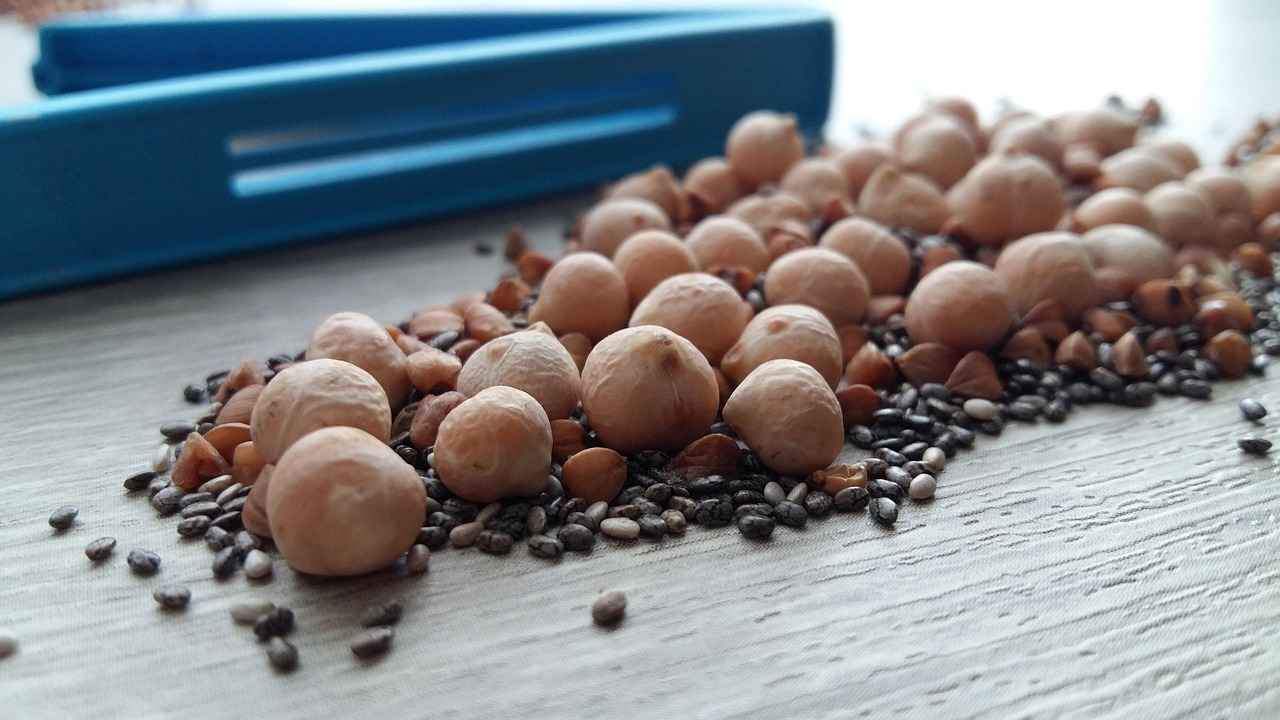
How to Properly Soak Chia Seeds?
Soaking chia seeds is a vital step in unlocking their full potential. By absorbing liquid, these tiny seeds swell and form a gel-like substance that not only enhances their nutritional benefits but also makes them easier to digest and incorporate into various dishes. Below, we will explore the best practices for soaking chia seeds to maximize their health benefits.
Soaking chia seeds is crucial for several reasons:
- Improved Nutrient Absorption: Soaking helps break down the outer layer of the seeds, making it easier for your body to absorb essential nutrients.
- Enhanced Digestibility: The gel-like texture formed during soaking makes chia seeds easier to digest, reducing the risk of gastrointestinal discomfort.
- Versatile Usage: Soaked chia seeds can be easily added to smoothies, puddings, and baked goods, enhancing their texture and nutritional profile.
The ideal soaking ratio for chia seeds is typically 1:6, meaning one part chia seeds to six parts liquid. This ratio is essential for ensuring that the seeds expand properly and absorb enough moisture. For example, if you use 1 tablespoon of chia seeds, you should mix it with 6 tablespoons of water or your preferred liquid.
Soaking time can vary based on personal preference:
- Minimum Time: A minimum of 30 minutes is recommended for the seeds to begin absorbing liquid and forming a gel.
- Optimal Time: For a thicker consistency, soaking for 2-4 hours is ideal.
- Overnight Soaking: For convenience, you can soak chia seeds overnight in the refrigerator, ensuring they are ready for use in the morning.
You can soak chia seeds in various liquids, including:
- Water: The simplest option, allowing the natural flavor of chia seeds to shine.
- Milk: Dairy or plant-based milk adds creaminess and enhances the flavor.
- Juices: Fruit juices can infuse the seeds with additional flavor and sweetness.
Once your chia seeds are soaked, here are some practical tips for incorporating them into your meals:
- Stir Well: After soaking, give the mixture a good stir to break up any clumps that may have formed.
- Store Properly: If you have leftover soaked chia seeds, store them in an airtight container in the refrigerator for up to a week.
- Experiment: Try adding soaked chia seeds to smoothies, yogurt, oatmeal, or even baked goods for an added nutritional boost.
To ensure the best results when soaking chia seeds, consider the following tips:
- Use Fresh Seeds: Always use fresh chia seeds to maximize their nutritional benefits.
- Adjust Ratios: Feel free to adjust the soaking ratio based on your desired texture; more liquid will yield a thinner consistency.
- Flavor It Up: Add a pinch of salt or a dash of vanilla extract to the soaking liquid for extra flavor.
By following these guidelines, you can effectively soak chia seeds to enhance their nutritional profile and enjoy their numerous health benefits. Whether you’re adding them to smoothies or using them in baking, soaked chia seeds can be a versatile addition to your diet.
What Is the Ideal Soaking Ratio?
When it comes to preparing chia seeds for consumption, understanding the ideal soaking ratio is crucial. This not only enhances the seeds’ nutritional benefits but also improves their texture and digestibility. The recommended soaking ratio for chia seeds is 1:6, which means one part chia seeds to six parts liquid. This ratio is essential for ensuring that the seeds can expand adequately and absorb sufficient moisture.
The soaking ratio is significant because it affects the overall quality and effectiveness of chia seeds in your diet. When chia seeds are soaked properly, they absorb liquid and swell, creating a gel-like consistency that makes them easier to digest. This process also helps release the nutrients contained within the seeds, allowing for better absorption in the body.
To achieve the ideal soaking ratio, follow these simple steps:
- Measure Your Ingredients: Use a measuring cup to ensure you have the correct proportions. For example, if you use 1 cup of chia seeds, you should add 6 cups of liquid, which can be water, almond milk, or any other preferred liquid.
- Mix Thoroughly: Combine the chia seeds and liquid in a bowl or jar. Stir well to prevent clumping and ensure even distribution.
- Let It Sit: Allow the mixture to sit for at least 30 minutes to several hours. This time frame allows the chia seeds to absorb the liquid fully and expand.
Adjusting the soaking ratio can lead to undesirable results. If you use too little liquid, the seeds may not expand adequately, resulting in a gritty texture that is less enjoyable to consume. Conversely, using too much liquid can lead to a watery mixture, making it challenging to incorporate into recipes.
Yes, soaking chia seeds overnight is a great option. This extended soaking time allows the seeds to absorb even more liquid, resulting in a thicker gel. This texture can be beneficial for recipes such as chia pudding or smoothies, where a creamy consistency is desired.
Once you have soaked your chia seeds, there are numerous ways to incorporate them into your diet:
- Chia Pudding: Mix soaked chia seeds with your favorite sweetener and flavorings, then refrigerate for a delicious pudding.
- Smoothies: Add soaked chia seeds to smoothies for an extra nutrient boost without altering the flavor.
- Baking: Use soaked chia seeds as a healthy egg substitute in baking recipes.
Understanding the ideal soaking ratio and its importance can significantly enhance your experience with chia seeds. By following the recommended practices, you can maximize their nutritional benefits and enjoy a versatile ingredient that fits seamlessly into various meals.
How Long Should You Soak Chia Seeds?
Chia seeds have gained immense popularity due to their numerous health benefits and versatility in various recipes. One crucial aspect of preparing chia seeds is understanding how long to soak them for optimal results. This article delves into the importance of soaking chia seeds, the ideal soaking times, and the benefits of achieving the perfect texture.
Soaking chia seeds is essential for several reasons. Firstly, it enhances nutrient absorption by breaking down the outer layer of the seeds, making it easier for your body to utilize the beneficial nutrients. Additionally, soaking creates a gel-like consistency, which can improve the texture of your dishes, making them more enjoyable to consume.
When it comes to soaking chia seeds, the duration can vary based on personal preference and the desired texture. The general guideline is to soak chia seeds for at least 30 minutes to several hours. Let’s break down the soaking times:
- 30 Minutes: This is the minimum soaking time. It allows the seeds to absorb some liquid and begin to swell, resulting in a slightly thicker consistency.
- 1 to 2 Hours: Soaking chia seeds for this duration results in a more pronounced gel-like texture, making them ideal for smoothies and puddings.
- Overnight (8-12 Hours): For those who prefer a thicker gel, soaking chia seeds overnight is the best option. This method is perfect for meal prep, as you can have ready-to-use chia gel for your morning meals.
Longer soaking times yield a thicker gel, which can be beneficial for various recipes. This gel not only enhances the texture but also provides a feeling of fullness, making it a great addition to weight management diets. The gel formation occurs because chia seeds can absorb up to 12 times their weight in water, creating a satisfying and nutritious ingredient.
To soak chia seeds correctly, follow these simple steps:
1. Measure out your chia seeds (e.g., 1/4 cup).2. Add the seeds to a bowl or container.3. Pour in water or your choice of liquid (use a 1:6 ratio; for 1 part chia, use 6 parts liquid).4. Stir well to prevent clumping.5. Cover and let sit for the desired soaking time.6. After soaking, stir again and enjoy in your favorite recipes!
Once your chia seeds are soaked, they can be incorporated into a variety of dishes:
- Smoothies: Add soaked chia seeds to your smoothie for added thickness and nutrition.
- Puddings: Combine soaked chia seeds with milk or a dairy alternative for a delicious pudding.
- Baking: Use soaked chia seeds in muffins or bread as a nutritious ingredient.
In conclusion, soaking chia seeds is a simple yet effective way to enhance their nutritional benefits and improve digestibility. By understanding the ideal soaking times and methods, you can easily incorporate these super seeds into your diet, boosting your overall health and wellness.

How to Incorporate Soaked Chia Seeds into Your Diet?
Chia seeds are not just a nutritional powerhouse; they are also incredibly versatile when it comes to incorporating them into your meals. Once soaked, these tiny seeds take on a gel-like consistency that enhances their usability in various dishes. This section will explore creative ways to include soaked chia seeds in your meals and snacks, allowing you to enjoy their numerous health benefits while keeping your diet exciting.
One of the simplest ways to incorporate soaked chia seeds is by adding them to your smoothies. They blend effortlessly into any smoothie mix, providing a creamy texture and an added nutritional boost. Consider adding a tablespoon of soaked chia seeds to your favorite fruit smoothie for extra fiber and omega-3 fatty acids.
Overnight oats are a popular breakfast choice, and soaking chia seeds can elevate this dish. Combine rolled oats, soaked chia seeds, your choice of milk, and sweeteners like honey or maple syrup. Let it sit overnight in the fridge, and in the morning, you’ll have a nutritious and filling breakfast ready to go. Add fruits, nuts, or seeds for additional flavor and texture.
Chia pudding is a delightful and healthy dessert option. Simply mix soaked chia seeds with your choice of milk (almond, coconut, or dairy) and sweeten to taste. Let it sit for a few hours or overnight until it thickens. Top with fresh fruits, nuts, or granola for an extra crunch. This dish is not only delicious but also packed with nutrients.
For a unique twist, consider adding soaked chia seeds to your soups and stews. They can act as a thickening agent while also boosting the nutritional profile of your meal. Stir in a tablespoon of soaked chia seeds during the last few minutes of cooking for a delightful surprise.
Soaked chia seeds can also be incorporated into healthy snacks. Try making chia seed energy balls by combining soaked chia seeds with oats, nut butter, and your choice of sweeteners. Roll them into bite-sized balls for a perfect on-the-go snack that will keep you energized throughout the day.
Incorporating soaked chia seeds into your baked goods is another excellent way to enjoy their benefits. Add them to muffins, breads, or pancakes for added moisture and nutrition. They can even serve as an egg substitute in vegan recipes, making them a versatile ingredient in your baking repertoire.
Enhance your salads by sprinkling soaked chia seeds on top for added crunch and nutrition. You can also blend them into homemade salad dressings, providing a creamy texture without the need for dairy. This not only boosts the flavor but also increases the health benefits of your salads.
Incorporating soaked chia seeds into your diet is not only easy but also beneficial for your overall health. With these creative ideas, you can enjoy the many advantages of chia seeds while keeping your meals interesting and delicious.
Adding Chia Seeds to Smoothies
Incorporating chia seeds into your smoothies is not only a fantastic way to enhance their nutritional profile but also to enjoy a unique texture that can elevate your drink. Soaked chia seeds are particularly beneficial as they absorb liquid and expand, creating a gel-like consistency that contributes to a creamy texture without overpowering the flavor of your smoothie. This makes them an ideal addition for those looking to boost their intake of essential nutrients while maintaining a delicious taste.
When you soak chia seeds, they become easier to digest and their nutrients become more bioavailable. This means that your body can absorb the healthy fats, protein, and fiber more effectively. Additionally, the gel-like texture of soaked chia seeds helps to thicken smoothies, making them more satisfying and filling. This can be especially beneficial for those who are looking to manage their weight or simply want a more substantial drink.
- Choose Your Liquid: You can soak chia seeds in water, almond milk, coconut milk, or any other liquid of your choice.
- Ideal Soaking Ratio: A common ratio is 1 part chia seeds to 6 parts liquid.
- Soaking Time: Allow the seeds to soak for at least 30 minutes, but for best results, soak them overnight.
Here are a few delicious smoothie ideas that incorporate soaked chia seeds:
- Berry Blast Smoothie: Blend together a cup of mixed berries, a banana, a cup of yogurt, and 2 tablespoons of soaked chia seeds for a refreshing treat.
- Green Power Smoothie: Combine spinach, a green apple, a banana, a cup of almond milk, and 2 tablespoons of soaked chia seeds for a nutrient-packed drink.
- Chocolate Banana Smoothie: Mix a banana, a tablespoon of cocoa powder, a cup of milk, and 2 tablespoons of soaked chia seeds for a deliciously indulgent option.
By including soaked chia seeds in your smoothies, you can enjoy numerous health benefits:
- Rich in Nutrients: Chia seeds are an excellent source of omega-3 fatty acids, fiber, protein, and essential minerals.
- Promotes Satiety: The fiber content in chia seeds helps you feel full longer, reducing the likelihood of snacking between meals.
- Supports Digestive Health: The soluble fiber in chia seeds aids in digestion and can help maintain regularity.
To maximize the benefits of chia seeds in your smoothies, consider the following tips:
- Experiment with Flavors: Chia seeds have a neutral flavor, so they can be added to a variety of smoothie recipes without altering the taste.
- Adjust Consistency: If your smoothie is too thick due to the chia seeds, simply add more liquid to achieve your desired consistency.
- Store Properly: If you prepare a large batch of soaked chia seeds, store them in an airtight container in the refrigerator for up to 5 days.
Incorporating soaked chia seeds into your smoothies is a simple yet effective way to enhance both the flavor and nutrition of your beverages. With a little creativity and experimentation, you can enjoy a variety of delicious smoothies that not only satisfy your taste buds but also contribute to your overall health.
Using Chia Seeds in Baking
Chia seeds have gained popularity not only for their health benefits but also for their versatility in the kitchen. One of the most exciting ways to incorporate chia seeds into your diet is through baking. They can transform ordinary baked goods into nutritious powerhouses, offering a range of health benefits while enhancing flavor and texture.
When it comes to baking, chia seeds serve multiple purposes. They are an excellent source of omega-3 fatty acids, fiber, and protein, making them an ideal addition to any recipe. Additionally, their unique ability to absorb liquid and form a gel makes them a fantastic egg substitute in vegan baking. This gel-like consistency not only helps bind ingredients together but also adds moisture to baked goods.
- Substitution Ratio: To replace one egg, mix 1 tablespoon of chia seeds with 2.5 tablespoons of water. Allow the mixture to sit for about 10-15 minutes until it thickens.
- Best Baked Goods: This egg substitute works particularly well in muffins, pancakes, and quick breads, providing a light and fluffy texture.
Incorporating chia seeds into your baking not only boosts the nutritional profile but also adds a delightful crunch. When added to recipes like muffins or loaves of bread, they contribute essential nutrients without overpowering the flavor. Here are some key benefits:
- Fiber Boost: Chia seeds are rich in dietary fiber, aiding digestion and promoting a feeling of fullness.
- Healthy Fats: They are packed with healthy fats, particularly omega-3 fatty acids, which are beneficial for heart health.
- Protein Source: Chia seeds provide a plant-based protein source, making them an excellent addition to any diet.
There are numerous ways to include chia seeds in your baked goods:
- Muffins: Add chia seeds to your favorite muffin recipes for an extra crunch and nutritional boost.
- Breads: Mix chia seeds into your bread dough for added texture and flavor.
- Cookies: Incorporate chia seeds into cookie dough for a healthy twist on classic recipes.
- Pancakes and Waffles: Stir chia seeds into the batter to enhance the nutritional content of breakfast favorites.
To ensure the best results when baking with chia seeds, consider the following tips:
- Soak Before Use: Soaking chia seeds before adding them to your recipe can help achieve a better texture.
- Experiment with Ratios: Adjust the amount of chia seeds based on your preference; more seeds can lead to a denser texture.
- Combine with Other Ingredients: Pair chia seeds with other healthy ingredients like nuts, fruits, and whole grains for a balanced treat.
By incorporating chia seeds into your baking, you can create delicious and healthy treats that are sure to please everyone. Whether you are looking for a nutritious breakfast option or a guilt-free dessert, chia seeds offer a simple yet effective way to enhance your baked goods. Embrace the power of chia seeds and enjoy the numerous health benefits they bring to your kitchen!

Are There Any Risks or Side Effects?
When considering the incorporation of chia seeds into your diet, it’s essential to be aware of potential risks and side effects. While these seeds are generally safe for most individuals, some may experience digestive discomfort or other adverse reactions. This section will delve into the potential side effects of chia seeds and provide strategies to mitigate them.
Chia seeds are rich in dietary fiber, which is beneficial for digestive health. However, if consumed in large quantities without adequate hydration, they can lead to bloating, gas, or even constipation. This is primarily due to the seeds’ ability to absorb liquid and expand in the digestive tract.
To prevent these issues, it is advisable to:
- Start with small amounts: Gradually introduce chia seeds into your diet, beginning with one teaspoon and increasing as your body adjusts.
- Stay hydrated: Ensure you drink plenty of water throughout the day to help the fiber move smoothly through your digestive system.
- Soak the seeds: Always soak chia seeds before consumption. This allows them to absorb water and form a gel, making them easier to digest.
While allergies to chia seeds are quite rare, they can occur. Individuals with known allergies to other seeds, such as flaxseeds or sesame seeds, may be at a higher risk. Symptoms of an allergic reaction can include:
- Skin reactions: Such as hives or rashes.
- Respiratory issues: Including difficulty breathing or nasal congestion.
- Gastrointestinal symptoms: Such as nausea or vomiting.
If you suspect you have an allergy to chia seeds, it’s crucial to consult a healthcare professional before adding them to your diet.
Chia seeds can potentially interact with certain medications, particularly those that affect blood sugar levels or blood pressure. Due to their high fiber content, chia seeds may enhance the effects of these medications, leading to hypoglycemia or hypotension. If you are on medication for diabetes or hypertension, consult your doctor before incorporating chia seeds into your routine.
To enjoy the health benefits of chia seeds while minimizing the risk of side effects, consider the following best practices:
- Moderation is key: Limit your intake to about 1-2 tablespoons per day.
- Incorporate into meals: Add soaked chia seeds to smoothies, yogurt, or oatmeal to enhance digestibility.
- Listen to your body: Pay attention to how your body reacts after consuming chia seeds and adjust your intake accordingly.
In summary, while chia seeds offer numerous health benefits, being aware of potential risks and side effects is crucial for safe consumption. By following the recommended guidelines and listening to your body, you can enjoy the nutritional advantages of chia seeds while minimizing any adverse effects.
Can Chia Seeds Cause Digestive Issues?
Chia seeds have gained immense popularity for their impressive nutritional profile, but some individuals may wonder about their potential digestive issues. Understanding the relationship between chia seeds and digestion is crucial for incorporating them into your diet effectively.
While chia seeds are generally safe for most people, they can cause some digestive discomfort in certain individuals. The most common issues include:
- Bloating: This sensation of fullness or swelling in the abdomen can occur when chia seeds are consumed in large quantities.
- Gas: Some people may experience increased gas production, leading to discomfort.
- Constipation: If not consumed with adequate hydration, chia seeds can absorb water in the digestive tract, potentially leading to constipation.
The primary reason for these digestive issues is the high fiber content of chia seeds. Each serving contains approximately 11 grams of fiber, which is beneficial for digestion but can be overwhelming for those who are not accustomed to high-fiber diets. When chia seeds are consumed dry or in large amounts without sufficient liquid, they can expand and absorb water in the gut, leading to discomfort.
To enjoy the numerous health benefits of chia seeds while minimizing the risk of digestive discomfort, consider the following tips:
- Start Slowly: Gradually increase your intake of chia seeds. Begin with a small amount, such as one teaspoon, and slowly work your way up to the recommended serving size.
- Stay Hydrated: Always consume chia seeds with plenty of water. A good rule of thumb is to drink at least 8 ounces of liquid for every tablespoon of dry chia seeds.
- Soak Before Consumption: Soaking chia seeds in water or another liquid for at least 30 minutes can help create a gel-like consistency that is easier to digest.
It’s essential to listen to your body when introducing chia seeds into your diet. If you experience persistent digestive issues, it may be wise to consult a healthcare professional. Additionally, individuals with a history of digestive disorders should approach chia seeds with caution.
Absolutely! Despite the potential for digestive discomfort, chia seeds offer numerous health benefits. They are rich in omega-3 fatty acids, antioxidants, and essential minerals, making them an excellent addition to a balanced diet. By following the tips mentioned above, you can enjoy the nutritional advantages of chia seeds while minimizing any digestive issues.
Are There Any Allergies to Chia Seeds?
Chia seeds have gained immense popularity as a superfood due to their numerous health benefits. However, it’s crucial to recognize that some individuals may experience allergies to chia seeds. Understanding these allergies, their symptoms, and how to approach chia seeds in your diet is essential for safe consumption.
Chia seed allergies, though relatively rare, can occur in some individuals. This allergy is typically associated with a hypersensitivity to proteins found in chia seeds. For those with existing allergies to other seeds or nuts, the risk of developing an allergy to chia seeds may be higher.
Symptoms of a chia seed allergy can vary widely among individuals. Common reactions may include:
- Skin Reactions: These can manifest as hives, rashes, or eczema.
- Gastrointestinal Issues: Symptoms such as nausea, vomiting, or diarrhea may occur after consumption.
- Respiratory Problems: Some individuals may experience difficulty breathing, wheezing, or nasal congestion.
- Anaphylaxis: In severe cases, a life-threatening reaction known as anaphylaxis may occur, requiring immediate medical attention.
When introducing chia seeds into your diet for the first time, it’s essential to proceed with caution. Here are some tips:
- Consult with a Healthcare Professional: Before adding chia seeds, especially if you have a history of allergies, consult with your doctor or an allergist.
- Start with Small Quantities: Begin with a small amount, such as a teaspoon, to monitor for any adverse reactions.
- Observe for Reactions: Keep track of any symptoms that may arise after consuming chia seeds. If any allergic reactions occur, discontinue use immediately.
If you suspect that you are having an allergic reaction to chia seeds, it is important to take the following steps:
- Stop Consumption: Immediately stop eating chia seeds or any products containing them.
- Seek Medical Attention: If symptoms are severe or if you experience difficulty breathing, seek emergency medical help right away.
- Keep an Allergy Diary: Documenting your reactions can help you identify patterns and share valuable information with your healthcare provider.
If you find that chia seeds do not agree with you, there are several alternatives that offer similar health benefits:
- Flaxseeds: Rich in omega-3 fatty acids and fiber, flaxseeds can be a suitable substitute.
- Hemp Seeds: These seeds are also packed with nutrients and can be used in various recipes.
- Sunflower Seeds: A great source of healthy fats and protein, sunflower seeds can be added to salads and snacks.
In summary, while chia seeds are a nutritious addition to many diets, it is vital to be aware of potential allergies. By understanding the symptoms, taking precautions, and knowing what to do in case of a reaction, you can enjoy the health benefits of chia seeds safely.
Frequently Asked Questions
- How long should I soak chia seeds for maximum benefits?
For optimal results, soak chia seeds for at least 30 minutes. However, if you prefer a thicker gel, soaking them for several hours or even overnight is ideal!
- What is the best liquid to soak chia seeds in?
You can soak chia seeds in water, almond milk, coconut milk, or any other liquid of your choice. The key is to maintain a soaking ratio of 1:6 for the best texture!
- Can I eat chia seeds without soaking them?
Yes, you can eat them dry, but soaking them enhances their digestibility and nutrient absorption. Think of it as giving them a little spa treatment!
- Are there any side effects of consuming chia seeds?
While generally safe, some people may experience digestive discomfort if they consume too many without enough water. Start slow and listen to your body!
- How can I incorporate soaked chia seeds into my meals?
Soaked chia seeds are super versatile! Toss them into smoothies, sprinkle them on yogurt, or use them in baking. They blend right in while boosting nutrition!


